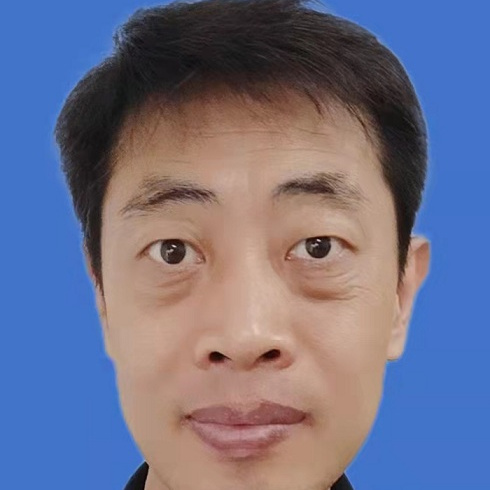Areas of Focus
- Gene Regulation
- Epigenetic Regulation
- 3D Genomics
Work Experience
- 2022-09~Present - Kunming Institute of Zoology, Chinese Academy of Sciences - Researcher
- 2013-08~2022-08 - Southern University of Science and Technology - Associate Professor
- 2009-12~2013-08 - Emory University - Postdoctoral Fellow
- 2004-11~2009-11 - National Institutes of Health - Visiting Scholar Postdoctoral Fellow
- 2004-07~2004-11 - Shanghai Institute of Biochemistry and Cell Biology, Chinese Academy of Sciences - Research Assistant
- 1997-09~2004-06 - Shanghai Institute of Biochemistry and Cell Biology, Chinese Academy of Sciences - Ph.D. in Science
- 1993-09~1997-06 - Fudan University - B.Sc. in Science
Academic Background & Achievements
- 1997-09--2004-06 Ph.D. in Science: Shanghai Institute of Biochemistry and Cell Biology, Chinese Academy of Sciences
- 1993-09--1997-06 B.Sc. in Science: Fudan University
Publications
- EpiMCI: Predicting Multi-Way Chromatin Interactions from Epigenomic Signals, 11th author, 2023
- Genome-wide enhancer identification by massively parallel reporter assay in Arabidopsis, 11th author, 2023
- High-throughput Pore-C reveals the single-allele topology and cell type-specificity of 3D genome folding, 11th author, 2023
- Evolutionarily distinct and sperm-specific supersized chromatin loops are marked by Helitron transposons in Xenopus tropicalis, 12th author, 2023
- Genome-wide identification of functional enhancers and their potential roles in pig breeding, 9th author, 2022
- Integration of Count Difference and Curve Similarity in Negative Regulatory Element Detection, 11th author, 2022
- Extensive Chromatin Structure-Function Associations Revealed by Accurate 3D Compartmentalization Characterization, 5th author, 2022
- The dynamic proteome in Arabidopsis thaliana early embryogenesis, 3rd author, 2022
- Interrogating global chromatin interaction network by high-throughput chromosome conformation capture (Hi-C) in plants, 11th author, 2022
- Original PKC inhibitors regulate stem cell self-renewal by regulating H3K27me3 and H3K9me3, 11th author, 2022
- Nucleosome remodeling and deacetylation complex and MBD3 influence mouse embryonic stem cell na��ve pluripotency under inhibition of protein kinase C, 5th author, 2022
- Three-dimensional folding dynamics of the Xenopus tropicalis genome, 11th author, 2021
- De novo genome assembly and Hi-C analysis reveal an association between chromatin architecture alterations and sex differentiation in the woody plant Jatropha curcas, 11th author, 2020
- An extracellular matrix protein promotes anillin-dependent processes in the Caenorhabditis elegans germline, 9th author, 2019
- Global Quantitative Mapping of Enhancers in Rice by STARR-seq, 11th author, 2019
- Amplification-free library preparation with SAFE Hi-C uses ligation products for deep sequencing to improve traditional Hi-C analysis, 11th author, 2019
- Modeling human point mutation diseases in Xenopus tropicalis with a modified CRISPR/Cas9 system, 12th author, 2019
- RNA Helicase DDX5 Inhibits Reprogramming to Pluripotency by miRNA-Based Repression of RYBP and its PRC1-Dependent and -Independent Functions, 15th author, 2017
- Baf60b-mediated ATM-p53 activation blocks cell identity conversion by sensing chromatin opening, 10th author, 2017
- Radical aryl migration enables diversity-oriented synthesis of structurally diverse medium/macroor bridged-rings, 10th author, 2016
- Widespread Rearrangement of 3D Chromatin Organization Underlies Polycomb-Mediated Stress-Induced Silencing, 3rd author, 2015
- Throwing transcription for a loop: expression of the genome in the 3D nucleus, 1st author, 2012
- Gene Density, Transcription, and Insulators Contribute to the Partition of the Drosophila Genome into Physical Domains, 1st author, 2012
- CTCF-mediated transcriptional regulation through cell type-specific chromosome organization in the beta-globin locus, 3rd author, 2012
- Distinct Ldb1/NLI complexes orchestrate gamma-globin repression and reactivation through ETO2 in human adult erythroid cells, 3rd author, 2011
- Insulators and imprinting from flies to mammals, 1st author, 2010
- Cell type specificity of chromatin organization mediated by CTCF and cohesin, 1st author, 2010
- Nups Take Leave of the Nuclear Envelope to Regulate Transcription, 1st author, 2010
- Involvement of Sp1/Sp3 in the activation of the GATA-1 erythroid promoter in K562 cells, 1st author, 2008
- Epigenetics of beta-globin gene regulation, 2nd author, 2008
- CTCF-dependent enhancer-blocking by alternative chromatin loop formation, 1st author, 2008
- A positive role for NLI/Ldb1 in long-range beta-globin locus control region function, 2nd author, 2007
- Matrine upregulates the cell cycle protein E2F-1 and triggers apoptosis via the mitochondrial pathway in K562 cells, 2nd author, 2007
- Functional analysis of multiple transcription factor sites in a regulatory element of human epsilon-globin gene, Not mentioned, 2004
- Effects of Huangqi (Hex) on inducing cell differentiation and cell death in K562 and HEL cells, Not mentioned, 2004
- The in vitro reconstitution of nucleosome and its binding patterns with HMG1/2 and HMG14/17 proteins, Not mentioned, 2003
- Screening of genes related to the expression of human epsilon-globin gene by using yeast one-hybrid system, Not mentioned, 2001
- CTCF-mediated transcriptional regulation through cell type-specific chromosome organization in the beta-globin locus, 3rd author





